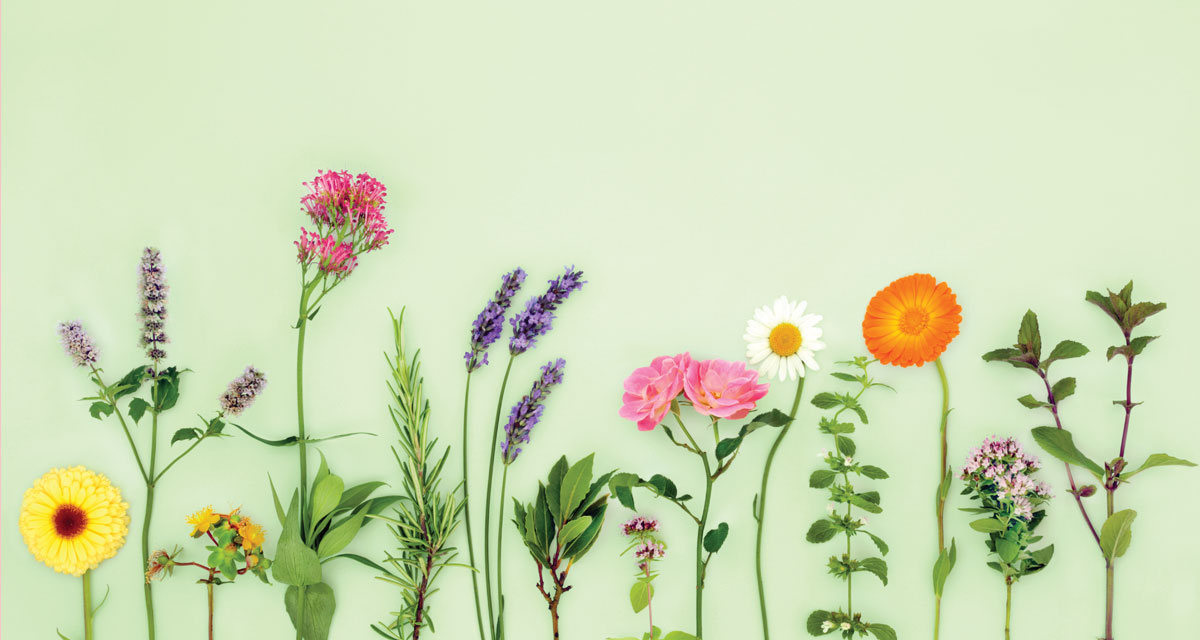The mindset believes that nourishing foods are fruits, vegetables, nuts, greens, and animal proteins. Flowers, on the other hand, are exquisite extensions of plants, fortifying the pollinating community of birds, bees, and other wildlife. We tend to forget that flowers, the ornamental beauties, are packed full of vitamins and minerals, antioxidant and anti-inflammatory properties. Indeed, nature provides us with an abundance of wild and edible plants. Sometimes, venturing beyond your garden into the fields and forests is the best way to find local edible and herbal plant species.
Wildcrafting
A term synonymous with foraging, “wildcrafting” involves harvesting plants from their natural or wild habitat. To learn more about your local plants, take a walk and look at what’s growing alongside roads, trails, and woodland areas. Take pictures to learn more about their surrounding environment. Be sure of its identity before plucking a flower or leaf, and only take a small amount, ensuring the plant can continue to thrive. Getting to know familiar trails and pathways will open the door to valuable learning.
Spring Edibles
As new spring life emerges, plants seeking the sun begin to move upward. It’s a perfect time to discover the signs of transformation. Usually, the plants that may be too bitter at maturity are incredibly tender during the spring season. Likewise, our bodies benefit from warmer and drier foods.
- Dandelion Leaf: Most are familiar with the flower, which is a true edible; however, before the blossom arrives, the leaves contain calcium, iron, magnesium, potassium, and vitamins A, C, and K. Added to salads, soups, or stir-fries, the greens are tasty and nutritious.
- Violet Leaf and Flower: Short in stature, the blue, purple, white, and yellow flowers are a welcomed sight, discovered in fields, orchards, and rocky environments. High in vitamins A and C, the flowers add to the pastry world and can thicken soups, due to their mucilage content.
- Tulips: Rather than eating a stuffed pepper, try a stuffed tulip! The flavor depends upon the color. Red petals are sweet, while white has a slight pepper aftertaste. As an oil infusion, the flowers are known to heal skin conditions and provide a soothing effect.
Warning: It’s wise to research edible flowers before tasting. For instance, avoid consuming fruit-tree flowers, since some varieties contain low levels of cyanide.
Summer Edibles
As temperatures warm the soil, delicious berries and other fruits, flowers, and fungi fill the fields and forests. Miraculously, the harvest from wildcrafting excursions provides the body with well-needed nutrients, such as antioxidants and anti-inflammatory flavonoids, to ease the internal heat levels.
You will find:
- Hibiscus: The large colorful blossom has properties to boost your immune system, treat inflammation, and prevent cell damage in the body, to name a few. Hibiscus is often used as an ingredient in teas and is similar in taste to the pomegranate. Additionally, you can eat the flower raw and cook the leaves, or use it in jams, relishes, and salads.
- Rose: Bathing with fresh rose petals or drinking rose water is a luxurious experience. Eating the organic flower is no different. The petals have a refreshingly smooth texture. Consider sprinkling rose petals on your salad, make “rose sugar,” or use it to improve the flavor of water.
- Lavender: Widely known for its distinctive fragrance, the lavender flower has become a staple in our edible lifestyles. You can find it in baked goods, infused syrups, herbal teas, spice rubs, and herbal mixtures. It pairs well with citrus, berries, chocolate, and particular herbs, like rosemary, sage, and thyme. As an infusion, lavender tea is an excellent stress reliever, easing muscle pains, aches, and calming the mind and body.
Warning: Never harvest the following plants from the wild: American ginseng, echinacea, goldenseal, sandalwood, and wild yam.
Bee balm flowers taste minty and spicy, while borage and daylily flowers have a flavor similar to cucumbers. No two blossoms taste the same. By learning about edible flowers growing in your garden and the wild, you, too, can gain unexpected nutrition and impart unique colors and flavors to your favorite meals.
*Lisa is an N.C. Cooperative Extension Master Garden volunteer, a state-certified beekeeper, and is presently studying herbalism.



















